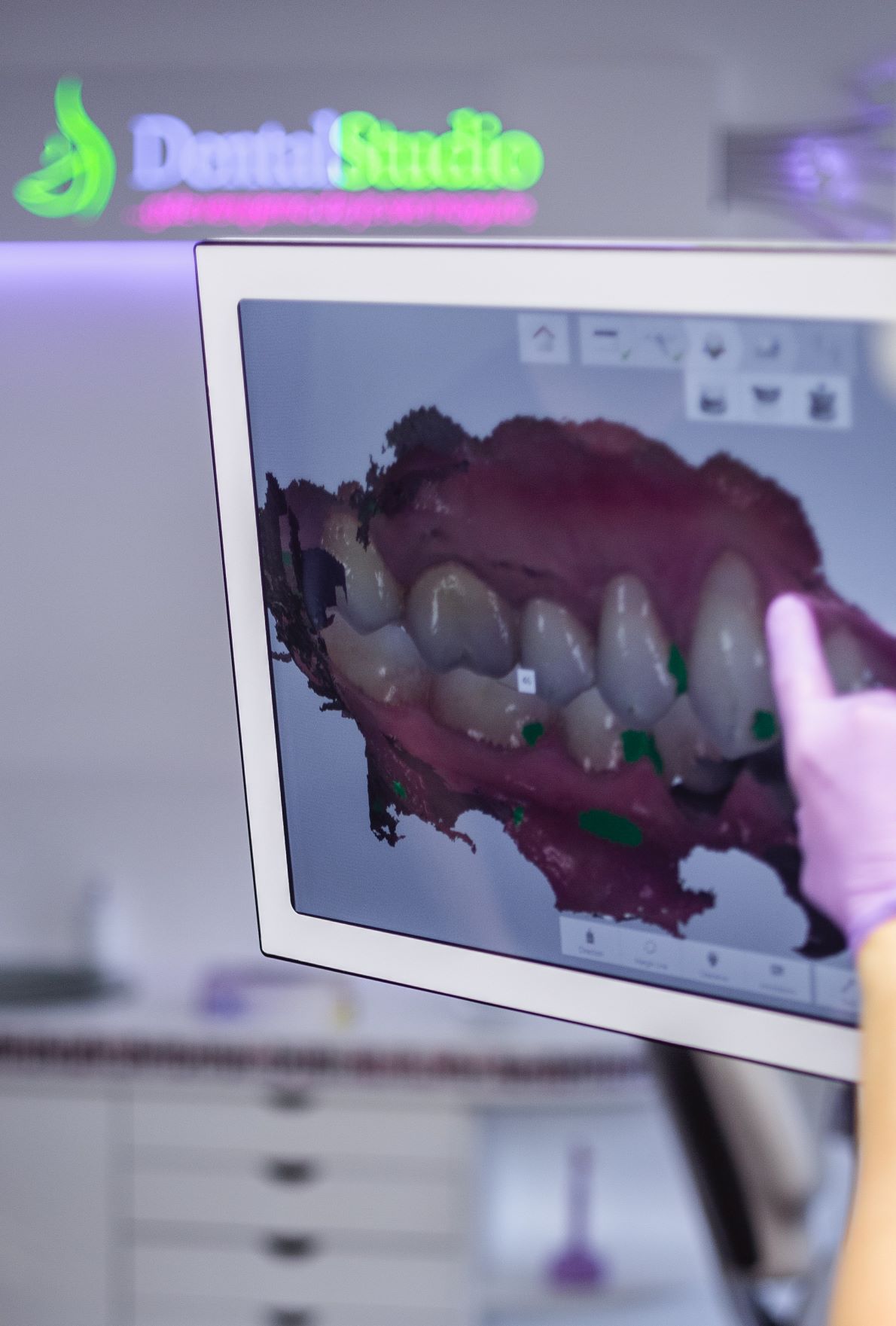What does the tooth supporting structure consist of?

The tooth supporting structure consists of a cavity in the alveolar bone called the alveolar socket, surrounded by the alveolar bone, where a tooth is located and attached with tooth cementum and periodontal ligaments to the maxillary or mandibular bone, covered with tooth tissue, gingiva, up to the edge of the tooth crown.
How does periodontal disease (periodontitis) occur?
Several factors cause infections of the tooth supporting structure because tooth self-cleansing, oral hygiene and normal circulation are prevented. What primarily occurs is gingivitis, a gum inflammation and bleeding condition, which is also the first symptom of any periodontal disease. If gingivitis is left untreated, the inflammation spreads and periodontium, the tissue attaching a tooth to the maxillary or mandibular bone, decays. Subsequently, periodontal pockets are formed, leading to periodontal disease.
What are periodontal pockets?
Periodontal pockets are formed in the section between inflamed gums and a tooth root, as the first phase of periodontal disease. Also, inflammatory processes in the alveolar bone may lead to an abscess, which potentially may cause inflammation of other organs and organ systems. The final consequence of periodontal disease is destruction of the tissue attaching teeth to bones and, ultimately, their loss.
Which factors cause periodontal disease (periodontitis)?
Local factors directly cause periodontal disease (periodontitis):
- Poor hygiene habits due to lack of dental hygiene, causing:
– dental plaque, soft, mucous deposits full of bacteria
– dental tartar, hard deposits resulting from mineralisation
2. Poor hygiene habits due to inadequate teeth brushing
– Improper teeth brushing
– Use of inadequate toothbrushes
3. Poor diet habits:
– Excessive consumption of soft food
– Excessive consumption of over-sweetened food
– Excessive consumption of food with artificial colours
4. Unilateral chewing – chewing only on one side of the dental structure
5. Breathing through mouth (only)
6 Cavities left untreated
7. Mechanical and chemical injuries of gums – dental flesh
8. Poorly executed dentistry work (not achieving good contact or enabling pockets to be formed)
9. Orthodontic irregularities (narrow jaw, teeth overlapping)
General factors do not cause periodontal disease directly, but reduce body immunity and enable its progress:
1. Blood disease (e.g. leukaemia)
2. Endocrinological changes – adolescence, pregnancy, diabetes
3. Contact with toxic substances (lead, mercury, bismuth, arsenic)
4. Prolonged use of specific medicines (corticosteroids, inhalation medicines for treating asthma and obstructive lung disease, antihypertensives, etc.)
5. Genetic factors
6. Aging
How is periodontal disease (periodontitis) treated?
Owing to huge advancements in science and technology, initial phases of periodontal disease can be cured today, whereas later phases and more difficult cases can be treated to prevent further progress, which leads to permanent tooth/teeth loss.
Therapy depends on a periodontal disease stage. The initial stage manifested by the formation of pockets is treated by removing dental tartar and mechanical processing of pockets and irrigating teeth using solvents and antiseptics, leading to suppression of an inflammation, followed by reduction of gum swells and pocket depth.
If periodontal pockets remain visible after the basic treatment, they are then eliminated or significantly reduced. Depending on location and other features of periodontal pockets, processing procedure (curettage) or surgical procedure (flap surgery) is performed.
This intervention is painless, with a local anaesthetic administered. As processing of a periodontal pocket using adequate curettes also includes removal of a pathologically altered gingiva tissue, this procedure is called periodontal pocket curettage. In surgical procedure (flap surgery), a cut is made on gingiva to lift it away in the shape of a flap, providing good access to a periodontal pocket, in order to enable complete removal of a pathologically altered tissue under direct eye control.
However, if the supporting structure is already damaged and teeth are loosened, a surgical intervention is required to remove the infected tissue in the bone and boost bone regeneration, most often by adding a membrane bone graft and growth factors, enabling regeneration of the damaged tissue and fixing of teeth in their position.
After the procedure, gingiva is sutured and stiches are removed after ten days. In case of a loss of one of more teeth, as a consequence of the terminal phase of periodontal disease, we need to apply a prosthetic treatment.
How to prevent periodontal disease (periodontitis)?
– Proper hygiene (regular and adequate brushing of teeth and massage of dental flesh, use of good toothbrushes)
– Proper diet (consumption of fresh food, proper chewing)
– Appropriate dentistry work (correction and maintenance of fillings, crowns, bridges, dentures)
– Regular visits to a dentist and removal of dental plaque and tartar





